Specialty Coffee Beans Lists
-
Coffee beans from Taitung
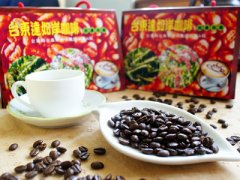
Taitung's agriculture has unique advantages in terms of climate and environment. It not only has a stable climate and less rain damage, but also has a good planting environment. Many well-known agricultural specialties, such as Golden Needle, Luoshenhua, and Sakya, have been bred ever since, and can be called a major agricultural county in Taiwan. In recent years, Taitung has also joined the ranks of coffee production, both on flat land and in high mountains, with environmental advantages and gradual progress.
2014-09-19 Coffee beans from Taitung -
Coffee Encyclopedia Colombian Coffee

The Colombian Coffee producers Association (Federacion Nacional de Cafeteos de Clolmbia), known as [FNC] for short in the industry, introduced the two main varieties of Colombian coffee, Kaddura and Colombia. Kaddura, which was introduced from Brazil in the 1960s, now accounts for 45-50% of the country's output and has replaced the earliest Tibica. A new variety with the same name as Colombia [Colombia]
2014-09-19 Coffee encyclopedia Colombian coffee -
Coffee encyclopedia and snow caffeine

Yejashaffe is a small town with an elevation of 1700 Murray 2100 meters above sea level. It is also synonymous with Ethiopian boutique beans. It has been a wetland since ancient times, and the ancient saying [yirga] means "settle down], and [cheffe] means [wetland], so [Yega Xuefen] means [let us settle down in this wetland]. It is one of the coffee producing areas with the highest average elevation in Ethiopia. Yejiaxue
2014-09-19 Coffee encyclopedia Yega Snow Coffee -
Boutique single Yemeni coffee beans

Yemeni Coffee Mocha is the earliest export port of Yemeni coffee beans, a well-known coffee named after a port in Yemen. The most familiar mocha coffee. When the word appears on the recipes of bags and cafes, the meaning is different. The former refers to the port where coffee beans are exported, while the latter refers to a kind of coffee. Strictly speaking, exported from the Yemeni port of Mocha
2014-09-18 Boutique single Yemeni coffee beans -
Ethiopia, the origin of African Kenyan coffee beans.
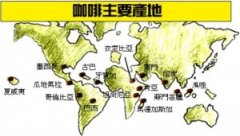
Kenyan coffee most Kenyan coffee grows at an altitude of 15002100 meters and is harvested twice a year. Its main feature is a distinct fruit aroma, the common fruit aroma is citrus. Kenyan coffee has a multi-layered taste and juice acidity, perfect grapefruit and wine flavor, moderate mellow, is the favorite of many people in the coffee industry. Kenyan coffee, please.
2014-09-18 African Kenyan coffee beans Ethiopian coffee producing area -
Ethiopia, the origin of African Kenyan coffee beans.
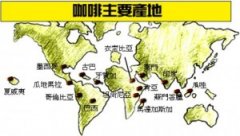
Kenyan coffee most Kenyan coffee grows at an altitude of 15002100 meters and is harvested twice a year. Its main feature is a distinct fruit aroma, the common fruit aroma is citrus. Kenyan coffee has a multi-layered taste and juice acidity, perfect grapefruit and wine flavor, moderate mellow, is the favorite of many people in the coffee industry. Kenyan coffee, please.
2014-09-18 African Kenyan coffee beans Ethiopian coffee producing area -
Coffee beans from Central America and Costa Rica, one of the coffee producing areas of Tarasu.
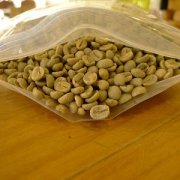
The coffee beans produced in the high latitudes of Costa Rica are famous in the world, full-bodied, mild in taste, but extremely sour. The coffee beans here have been carefully processed, which is why they have high-quality coffee. Located in the south of SanJos, the capital of Tarasu, Costa Rica is one of the most valued coffee growers in the country. Tarrazu epoch
2014-09-18 Tarasu coffee origin Central American coffee beans Costa Rican coffee beans -
Types of boutique coffee beans world-famous boutique coffee beans and their producing area distribution map
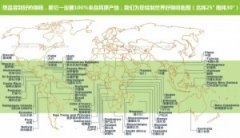
World Fine Coffee Map Latin American Coffee beans (Central and South America) Brazil: Santos, Bahia, Cerrado, Mogiana Mexico: Coatepec, Huatusco, Orizaba, Maragogype, Tapanchula, H
2014-09-18 Types of boutique coffee beans single boutique coffee beans origin of coffee beans -
Tell you about coffee beans, from fruit to beans.

Every year in October, coffee from all over the world slowly enters the ripening period, and every step of this red fruit will affect its taste from the moment it is picked. Step.1 picking in the production process of coffee beans. Generally speaking, fruits that turn red can be picked, but in some places, there is no strict quality control, even some unripe fruits.
2014-09-18 Coffee beans coffee beans -
Boutique Coffee Bean Lemon Queen Ethiopia Yega Xuefei

Yega Xuefei as an entry-level coffee beans, not how many times it is, but such a price, such a distinct character and taste, as long as it is not too bad bean baker, you know, immediately out of the oven, you can immediately drink the first cup of quality coffee with character. Yega coffee Yega beans are divided into five grades, and the more common beans are Yeh.
2014-09-18 Boutique coffee beans Ethiopia Yega Xuefei coffee beans -
The world's fine coffee is produced in Kenya.

Coffee entered Kenya in the 19th century, when Ethiopian coffee drinks were imported into Kenya through southern Yemen. But it was not until the early 20th century that the Bourbon Coffee Tree was created by the St. Austen Mission (St). Austin Mission) is introduced. Kenyan coffee is mostly grown at an altitude of 1500 to 2100 meters and is harvested twice a year. To ensure that only ripe berries are picked, people must
2014-09-17 Coffee knowledge world boutique coffee producing area Kenya -
Civet coffee cat droppings coffee beans boutique civet coffee

Civet coffee, the most expensive of all coffee beans. The game of cat and mouse in coffee beans was the first to make a name for Indonesia's civet coffee, Vietnam also had weasel coffee, Taiwan also produced masked palm civet coffee, and the Philippines, which is close to Indonesia, can certainly make civet dung coffee. Civet Coffee (KopiLuwak), Kopi (Indonesian, coffee), Luwak is Indonesia
2014-09-17 Civet coffee cat poop coffee beans boutique civet coffee -
Yemeni coffee mocha coffee boutique coffee

Yemeni Coffee Mocha is the earliest export port of Yemeni coffee beans, a well-known coffee named after a port in Yemen. The most familiar mocha coffee. When the word appears on the recipes of bags and cafes, the meaning is different. The former refers to the port where coffee beans are exported, while the latter refers to a kind of coffee. Strictly speaking, exported from the Yemeni port of Mocha
2014-09-17 Yemeni coffee mocha coffee boutique coffee -
American boutique coffee beans Costa Rican coffee beans

Costa Rican Coffee (Costarica Coffee): Costa Rican coffee is produced in the Republic of Costa Rica (The Republic of Coffee) in southern Central America. Its coffee quality is similar to Colombian coffee and is suitable for blending mixed coffee. The coffee beans produced in the high latitudes of Costa Rica are famous, rich and flavored in the world.
2014-09-16 American boutique coffee beans Costa Rican coffee beans -
Boutique single coffee beans Africa Kenya

African Kenyan coffee Kenyan coffee is mostly grown at an altitude of 15002100 meters and is harvested twice a year. Its main feature is a distinct fruit aroma, the common fruit aroma is citrus. Kenyan coffee has a multi-layered taste and juice acidity, perfect grapefruit and wine flavor, moderate mellow, is the favorite of many people in the coffee industry. Ken
2014-09-16 Boutique coffee beans Kenya Africa -
World boutique coffee producing area Asian coffee producing region Yemen
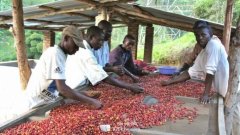
Mocha Mattari early Yemeni coffee was mainly exported from the port of Mocha, so the coffee that was later exported from here was named after Mocha. In Yemeni coffee, Mattari and Sanani are more famous, among which Matari tastes more full-bodied, with strong acidity and cocoa flavor, while Sanani has more
2014-09-15 Coffee knowledge boutique coffee producing area Yemeni coffee Asian coffee -
Costa Rican Coffee from the World Fine Coffee

Tarrazu in Costa Rica is one of the major coffee producing areas in the world. The coffee produced is light and pure in flavor and pleasant in aroma. Costa Rica, with its fertile volcanic soil and good drainage, is the first country in Central America to grow coffee and bananas for commercial value. Coffee and bananas are the country's main exports. In 1729, coffee was introduced from Cuba to Costa.
2014-09-15 Coffee knowledge Costa Rica coffee coffee producing area -
Boutique coffee-Kenya AA (Kenya AA)

Kenyan coffee is characterized by distinctive fruit aromas and acidity, with a BlackBerry and grapefruit flavor and a hint of wine in the full-bodied palate. The bright fruit aroma and acidity of Kenyan coffee in shallow roasting are rated as like fruit tea, which shows its unique flavor. Among them, the well-known Kenyan AA is full of particles, rich in taste, and well received by the world. Kenyan coffee is mostly grown in
2014-09-15 Boutique Coffee Kenya AA (Kenya AA) -
Coffee bean producing areas-South America-Ecuador (Ecuador)

Well-known representative coffee: Galapagos is between Colombia and Peru, and Ecuador, which passes through the equator, is one of the few countries in South America that produces both Arabica and Robastian coffee. In fact, Ecuador means the Spanish equator. Due to the use of old-fashioned traditional harvesting and handling methods, Ecuadorian coffee has not been
2014-09-13 Coffee bean producing areas South America Ecuador -
Coffee bean producing areas-South America-Peru (Peru)

Well-known representative coffee: Peru (Peru) Peru is one of the major coffee producing countries in South America, and coffee is Peru's largest export agricultural product, which has grown greatly in recent years. It can be seen from the map that the Andes mountains run parallel to the coast in Peru. More than 90% of Peruvian coffee is grown in the north, in the valleys east of the capital Lima, and in the slopes of the Andes.
2014-09-13 Coffee bean producing areas South America Peru
